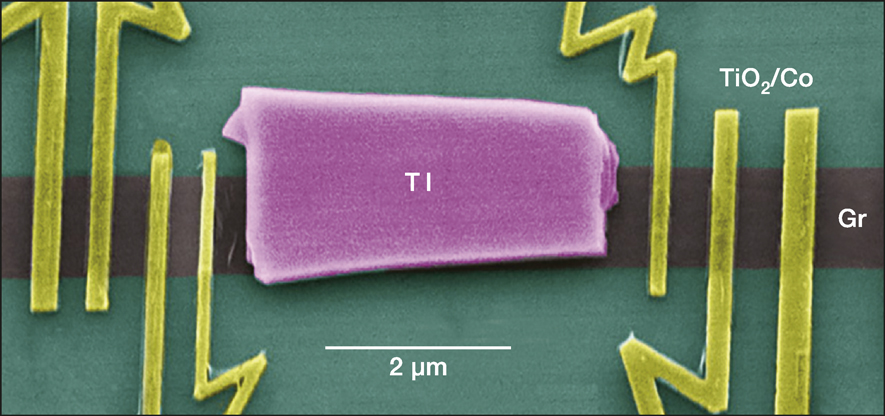Classical materials, such as metals, have electrons that exhibit a parabolic dependence of energy on momentum. This is a consequence of the finite mass of electrons, which limits their speed to well below the speed of light. The physics of such materials can be comprehensively explained using the Schrödinger equation. There also exists a class of materials, however, in which the charge carriers become massless, allowing them to move at relativistic speeds. The Dirac equation is required to capture the physics of such quantum materials. Graphene is a Dirac material that comprises a single sheet of sp 2-bonded carbon atoms. Massive charge-carrier mobilities have been reported for graphene. Topological insulators (such as Bi2Se3), are another exciting Dirac material, and are bulk insulators with electronic surface states that allow high-mobility charge transport on the surface that is “protected” from scattering. As such, Dirac materials are a burgeoning field, due to their exotic physics and the promise of revolutionary applications, such as quantum computing and spintronic-logic devices.
Although graphene offers excellent spin transport, it suffers from low spin–orbit coupling (SOC), a phenomenon that defines the interaction between an electronic spin and its orbital motion. A low SOC results in poor external control over the electronic spin, making the material incompatible with spintronic applications.Topological insulators (TIs), on the other hand, are endowed with a very strong SOC. A collaboration has now brought these two materials together. In an article published recently in Science Advances (doi:10.1126/sciadv.aat9349), a research team led by Saroj P. Dash of Chalmers University of Technology and Stephan Roche of Campus Universitat Autònoma de Barcelona has reported a heterostructure of graphene and bismuth-based TIs. To realize the van der Waals heterostructure, the team transferred mechanically exfoliated flakes of the TI on top of photolithographically patterned graphene. The layered assembly, sitting on a highly doped silicon substrate, was topped with electrodes to complete the stack and enable spin transport measurements.
The research group studied the electronic spin lifetime and the magnitude of the spin signal. It was found that the spin lifetimes of the heterostructures were significantly reduced (22 ps for graphene:Bi2Se3 and 7 ps for graphene:Bi1.5Sb0.5Te1.7Se1.3) compared to pristine graphene (400–800 ps). This surprising reduction in spin lifetime was suggested to arise due to the proximity of the TI to the graphene, which induced strong SOC in the graphene layer, and is the first evidence of this phenomenon in graphene–TI structures.
Next, the spin signal was tuned by applying a gate voltage across the heterostructure. These experiments, together with theoretical understanding developed by the researchers, suggest that due to the proximity of the TI, the charge carriers in graphene gain mass, which leads to the opening of a small bandgap (ca. 2–20 meV) and the development of strong SOC. This happens owing to hybridization between the electronic bands of graphene and TI.
“Generation of a large SOC in graph-ene has been a long-standing goal. We modified the properties of graphene via a proximity effect. Our Dirac material heterostructure still supports spin transport while acquiring a strong SOC,” Dash says. “These findings should pave the way toward creation of novel topological quantum effects and help observe new spintronic phenomena.”

Scanning electron microscope image of the Dirac material heterostructure. TI is topological insulator. Credit: Science Advances, AAAS.
According to the researchers, it now becomes possible to concomitantly manipulate the electronic spin and maintain spin transport in graphene–TI heterostructures, opening the door to deployment of these structures in next-generation spintronic devices.


